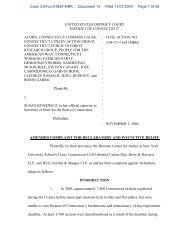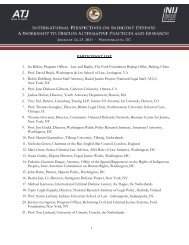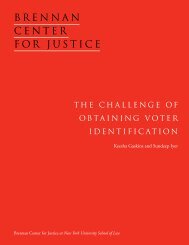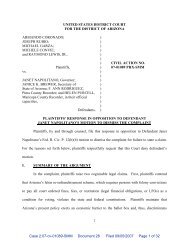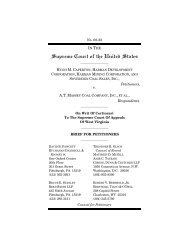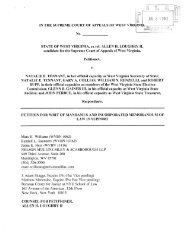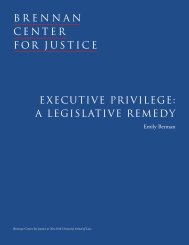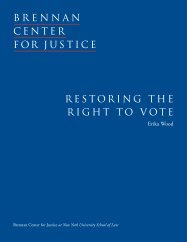THE NEW YORK STATE LEGISLATIVE PROCESS: AN ...
THE NEW YORK STATE LEGISLATIVE PROCESS: AN ...
THE NEW YORK STATE LEGISLATIVE PROCESS: AN ...
You also want an ePaper? Increase the reach of your titles
YUMPU automatically turns print PDFs into web optimized ePapers that Google loves.
38 <strong>THE</strong> <strong>NEW</strong> <strong>YORK</strong> <strong>STATE</strong> <strong>LEGISLATIVE</strong> <strong>PROCESS</strong>: <strong>AN</strong> EVALUATION <strong>AN</strong>D BLUEPRINT FOR REFORM<br />
the sponsorship process to accomplish these political goals.<br />
In fact, claiming credit for the introduction of legislation (without regard to<br />
its likelihood of passage) is a critical part of legislators’ public relations and<br />
campaign strategies. For the most part, members of the public and even outside<br />
advocates of specific bills do not perceive the introduction of a bill as an empty<br />
gesture, even if, statistically, it almost always is. The substantial political value of<br />
simply introducing legislation may explain, at least in part, why most members do<br />
not object more vocally to their leaders’ control over the full Legislature’s true<br />
consideration and passage of legislation. This may be the key lesson to be drawn<br />
from New York State’s high rate of introduction and low rate of enactment.<br />
In addition, although further research is needed to determine the precise impact<br />
of this high rate of bills introduced but not passed, these figures suggest that<br />
substantial staff and member resources are inefficiently devoted not to the proportionately<br />
few bills that may pass the Legislature but to the mountain of bills<br />
that will never even reach a committee vote much less final passage into law. As<br />
discussed in more detail in a later section, this inefficiency may help to explain the<br />
apparent contradiction between New York’s high expenditures on the<br />
Legislature’s operations and staff and the limited role played by most members in<br />
the production and negotiation of final legislation.<br />
This inefficient use of resources also undermines the conclusion that New York’s<br />
Legislature must introduce more bills than other legislatures simply to address the<br />
inherently complex and numerous challenges faced by such a large and diverse<br />
state. Indeed, one Assembly member noted that the large number of bills<br />
introduced often precludes in-depth discussion of important bills by dividing<br />
members’ attention. 255<br />
FIGURE 20<br />
BILLS INTRODUCED <strong>AN</strong>D ENACTED IN <strong>THE</strong> PROFESSIONAL LEGISLATURES, 2002<br />
(Sorted by Enactment Rate)<br />
State Bills Introduced Bills Enacted Percent Enacted<br />
Michigan 1112 767 69.0%<br />
Ohio 324 167 51.5%<br />
California 5162 2118 41.0%<br />
Illinois 8717 746 8.6%<br />
Wisconsin 497 42 8.5%<br />
Pennsylvania 4356 353 8.1%<br />
Massachusetts 7924 525 6.6%<br />
New York 16892 693 4.1%<br />
New Jersey 5004 134 2.7%



